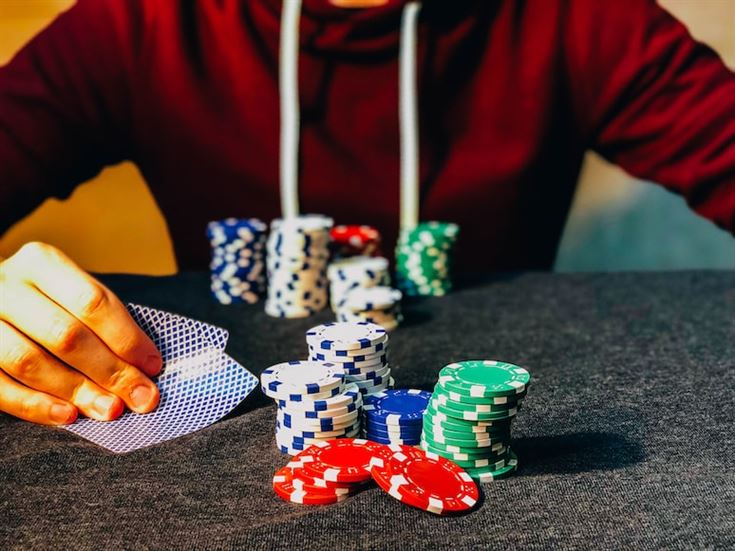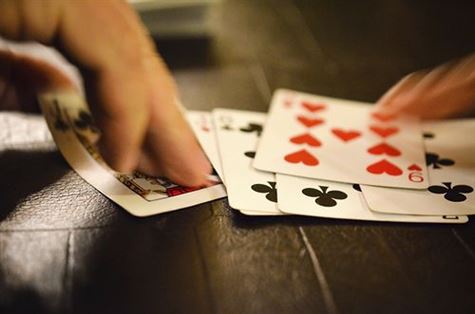Game theory is a mathematical framework used to analyze strategic decision-making in competitive situations. When it comes to poker, game theory can be applied to develop optimal strategies that maximize expected outcomes and minimize potential losses. Crafting these optimal strategies requires a deep understanding of the game’s mechanics, psychology, and the ability to make rational decisions based on available information. By leveraging game theory principles, players can enhance their gameplay, exploit opponents’ weaknesses, and ultimately increase their chances of success at the poker table.
The Role of Game Theory in Poker Strategy
Poker is a game of skill and strategy that has captivated players for centuries. From the smoky backrooms of old saloons to the glitzy casinos of Las Vegas, poker has evolved into a sophisticated game with high stakes and intense competition. In recent years, the role of game theory in poker strategy has gained prominence, as players seek to gain an edge by analyzing the mathematical and psychological aspects of the game.
Game theory, developed by mathematician John von Neumann and economist Oskar Morgenstern in the 1940s, is a branch of mathematics that studies how individuals make decisions in strategic situations. It provides a framework for understanding the optimal choices players should make based on their opponents’ actions and potential outcomes.
In poker, game theory can be applied to various aspects of play, including pre-flop hand selection, bet sizing, and bluffing. By analyzing the probabilities and expected values of different actions, players can craft strategies that maximize their chances of success in the long run.
One key concept in game theory poker play is the Nash equilibrium. Named after mathematician John Nash, this concept represents a state in which no player can improve their outcome by unilaterally changing their strategy. In other words, it is a stable point where all players are making optimal decisions given their opponents’ strategies.
To illustrate the importance of the Nash equilibrium in poker, consider a simple example. Suppose two players, Alice and Bob, are playing heads-up (one-on-one) Texas Hold’em. If Alice always raises with her best hands and folds everything else, while Bob always calls with any pair or better, then they have reached a Nash equilibrium. Any deviation from these strategies would result in a lower expected value for both players.
However, reaching a Nash equilibrium is not always possible in real-world poker games. The presence of multiple opponents with varying strategies and the incomplete information about their hands make it challenging to determine the optimal play in every situation. Instead, players must strive for a balanced strategy that maximizes their expected value against a wide range of opponents.
This is where game theory comes into play. By analyzing the probabilities and payoffs associated with different actions, players can approximate the optimal strategy for a given situation. For example, if a player faces a bet on the river and has a medium-strength hand, they can calculate the likelihood of their opponent bluffing versus having a strong hand. Based on these probabilities, the player can decide whether to call, fold, or raise, aiming to maximize their expected value over the long run.
Moreover, game theory also helps players understand how to exploit their opponents’ weaknesses. By identifying patterns in their betting behavior or tendencies towards certain types of hands, players can adjust their strategy accordingly. For instance, if a player notices that an opponent frequently bluffs on the river, they can call more often to capitalize on this weakness.
In conclusion, game theory plays a crucial role in crafting optimal poker strategies. It provides a framework for understanding the mathematical and psychological aspects of the game, allowing players to make informed decisions based on probabilities and expected values. While reaching a Nash equilibrium may be challenging in real-world poker games, players can still strive for a balanced strategy that maximizes their chances of success. By utilizing game theory principles, players can analyze their opponents’ actions and exploit their weaknesses, gaining an edge in the highly competitive world of poker.
Understanding the Principles of Poker Game Theory
Poker is a game of skill and strategy that has captivated players for centuries. While luck certainly plays a role in the outcome of each hand, it is the decisions made by players based on their understanding of game theory that ultimately determine their success.
Game theory is the study of strategic decision-making, particularly in situations where multiple players are involved. It seeks to analyze the choices made by individuals and predict how those choices will affect the overall outcome of the game. In the context of poker, game theory provides a framework for crafting optimal strategies that maximize expected value.
One fundamental principle of game theory in poker is the concept of equilibrium. An equilibrium occurs when no player can improve their expected value by unilaterally changing their strategy. In other words, an equilibrium represents a balance of strategies where each player is making the best possible decisions given their opponent’s actions.
To understand this concept, let’s consider a simplified version of poker known as heads-up limit Texas Hold’em. In this game, there are only two players, and the betting is limited to a fixed amount on each round. By analyzing all possible combinations of hands and betting sequences, researchers have been able to determine the optimal strategies for both players.
These strategies, known as equilibrium strategies, dictate the best course of action for each player in every possible situation. For example, if Player A has a pair of aces and Player B raises, the equilibrium strategy may dictate that Player A should re-raise a certain percentage of the time to maximize their expected value. Similarly, if Player B has a weak hand and Player A bets, the equilibrium strategy may dictate that Player B should fold most of the time.
While equilibrium strategies provide a solid foundation for decision-making in poker, they are not foolproof. Skilled opponents who deviate from the equilibrium can exploit these strategies and gain an edge. This leads to another important principle of game theory in poker: exploiting imbalances in opponents’ strategies.
Exploitative play involves identifying weaknesses in an opponent’s strategy and adjusting your own strategy to exploit those weaknesses. For example, if you notice that an opponent is folding too often to your bets, you can increase the frequency of your bluffs to take advantage of their tendency to fold. Conversely, if an opponent is calling too often, you can tighten up your range and only bet when you have a strong hand.
However, it’s important to note that exploiting opponents requires careful observation and adaptation. Players who rely solely on exploitative play without considering equilibrium strategies may find themselves vulnerable to skilled opponents who are adept at adjusting their strategies accordingly.
In conclusion, game theory provides valuable insights into the principles of poker strategy. By understanding equilibrium strategies and how to exploit imbalances in opponents’ play, players can craft optimal strategies that maximize expected value. However, it’s crucial to remember that poker is a dynamic game where constant adaptation is necessary. The best players are those who can seamlessly blend equilibrium-based decision-making with exploitative play, making them formidable opponents at the poker table.
Applying Game Theory Concepts to Enhance Your Poker Play
Poker is a game of skill, strategy, and calculated risk-taking. Players must constantly analyze their opponents’ moves, make educated guesses about their hands, and decide on the best course of action based on limited information. In recent years, many players have turned to game theory to help them refine their strategies and improve their chances of success at the poker table.
Game theory is a branch of mathematics that deals with decision-making in competitive situations. It provides a framework for analyzing strategic interactions between players and identifying optimal strategies. By applying game theory concepts to poker play, players can gain valuable insights into how to make the most profitable decisions in various situations.
One fundamental concept in game theory is the Nash equilibrium. Named after mathematician John Nash, this concept refers to a state where no player can improve their outcome by unilaterally changing their strategy. In other words, it represents a stable point where all players are playing optimally given their opponents’ strategies.
In poker, finding the Nash equilibrium can be challenging due to the complexity of the game and the ever-changing dynamics at the table. However, understanding the principles behind it can still provide valuable guidance. For example, when facing a bet or a raise from an opponent, a player should consider whether their hand is strong enough to call or raise back based on the likelihood of their opponent bluffing or holding a better hand.
Another important concept in game theory is mixed strategies. Instead of always using the same strategy, players can introduce randomness into their decision-making process. This makes it harder for opponents to exploit predictable patterns in their play. By occasionally deviating from conventional strategies, players can keep their opponents guessing and increase their own profitability.
For instance, let’s say a player has been consistently folding weak hands when faced with a bet. Observant opponents may start to exploit this by bluffing more frequently. However, if the player occasionally decides to call or even raise with a weaker hand, they can disrupt their opponents’ strategies and potentially win larger pots when they do have strong hands.
Game theory also emphasizes the importance of understanding your opponents’ strategies and adjusting your own accordingly. By analyzing their tendencies, you can identify patterns in their play and exploit them to your advantage. For example, if you notice that a certain opponent is overly aggressive when holding weak hands, you can adjust your strategy to call or raise more often against them.
However, it’s crucial to remember that game theory is just one tool in your poker arsenal. It should be used in conjunction with other skills such as reading opponents’ body language, managing bankroll, and maintaining emotional control. Ultimately, success in poker requires a combination of mathematical analysis, psychological insight, and adaptability.
In conclusion, applying game theory concepts to poker play can help players craft optimal strategies for success. Understanding concepts like Nash equilibrium, mixed strategies, and opponent analysis can provide valuable insights into decision-making at the poker table. By incorporating these principles into your play, you can enhance your chances of making profitable decisions and outmaneuvering your opponents. However, always remember that poker is a dynamic game that requires constant adaptation and the ability to read your opponents accurately.
Analyzing Optimal Strategies for Success in Game Theory Poker
Game theory poker is a complex and strategic game that requires players to think several steps ahead and make calculated decisions. Crafting optimal strategies is crucial for success in this game, as it can give players an edge over their opponents. In this article, we will explore the key elements of crafting optimal strategies in game theory poker.
One important aspect of crafting optimal strategies in game theory poker is understanding the concept of equilibrium. Equilibrium refers to a state where no player can improve their strategy by unilaterally deviating from it. In other words, it is a balanced point where all players are playing optimally given the strategies of their opponents.
To achieve equilibrium, players must analyze the different possible outcomes of each decision they make. They must consider not only their own potential gains but also the potential losses they may face. This analysis allows players to determine the best course of action that maximizes their expected value while minimizing their risk.
Another factor to consider when crafting optimal strategies in game theory poker is the concept of bluffing. Bluffing involves making bets or raises with weak hands in order to deceive opponents into thinking you have a strong hand. However, bluffing should be used strategically and sparingly, as excessive bluffing can lead to predictability and exploitation by observant opponents.
When deciding whether to bluff, players must assess their opponents’ tendencies and adapt accordingly. If their opponents are likely to fold easily, bluffing can be an effective tool to win pots without having the best hand. On the other hand, if their opponents are more likely to call or raise, bluffing becomes riskier and may not yield the desired results.
Furthermore, understanding the importance of position is essential in crafting optimal strategies in game theory poker. Position refers to a player’s place at the table relative to the dealer button. Players who act later in the betting round have more information about their opponents’ actions, allowing them to make more informed decisions.
Being in a late position provides players with the opportunity to control the size of the pot and manipulate their opponents’ actions. For example, a player in a late position can make larger bets or raises to put pressure on their opponents and force them into making mistakes. Conversely, being in an early position limits the amount of information available, requiring players to be more cautious with their betting decisions.
In addition to these key elements, successful game theory poker players must also have a deep understanding of mathematical concepts such as expected value and pot odds. Expected value involves calculating the average outcome of a decision based on the probabilities of different outcomes. Pot odds, on the other hand, refer to the ratio of the current size of the pot to the cost of a contemplated call.
By analyzing these mathematical concepts, players can make more informed decisions that maximize their potential gains and minimize their potential losses. They can calculate whether a bet or raise is profitable in the long run and adjust their strategies accordingly.
Crafting optimal strategies for success in game theory poker requires careful analysis, strategic thinking, and adaptability. By understanding equilibrium, bluffing strategically, considering position, and applying mathematical concepts, players can gain an edge over their opponents and increase their chances of winning.
Exploring the Relationship Between Poker and Game Theory
Poker is a game that has captivated players for centuries. It combines elements of skill, strategy, and chance, making it an intriguing challenge for those who seek to master it. But what if there was a way to improve your chances of success even further? Enter game theory.
Game theory is a branch of mathematics that analyzes strategic decision-making in situations where the outcome depends on the actions of multiple players. It provides a framework for understanding how individuals should make choices to maximize their own benefits while considering the potential reactions of others. Applying game theory principles to poker can help players develop optimal strategies that increase their odds of winning.
One key concept in game theory is the notion of equilibrium. In the context of poker, equilibrium refers to a state in which each player’s strategy is optimal given the strategies of the other players. Achieving equilibrium is desirable because it ensures that no player can deviate from their strategy to gain an advantage. This creates a balanced playing field and reduces the element of luck in determining the outcome of the game.
To understand how game theory can be applied to poker, let’s consider a simplified version of the game known as “heads-up limit hold’em.” In this variation, only two players compete against each other, and betting is limited to a predetermined amount on each round.
In heads-up limit hold’em, players have a finite number of possible hands they can be dealt. By analyzing these hands and calculating their expected value based on different betting strategies, players can determine the optimal action to take in each situation. For example, if a player holds a strong hand, such as a pair of aces, they may choose to raise the bet to extract maximum value from their opponents. On the other hand, if a player has a weak hand, like a low pair, they may opt to fold and minimize their losses.
However, the optimal strategy in poker is not solely based on the strength of one’s own hand. It also depends on the perceived strength of the opponent’s hand and their likely actions. Game theory provides tools to analyze these factors and adjust strategies accordingly.
One important concept in game theory poker play is the idea of bluffing. Bluffing occurs when a player bets or raises with a weak hand to deceive their opponents into thinking they have a stronger hand. By incorporating well-timed bluffs into their strategy, players can create uncertainty and force their opponents to make suboptimal decisions.
But bluffing is not without risks. If a player bluffs too frequently, they become predictable, and their opponents may start calling their bluffs more often. This highlights the delicate balance between aggression and deception that game theory poker play requires.
In addition to bluffing, game theory can also help players determine optimal bet sizing. By analyzing the pot odds and expected value of different bet sizes, players can make informed decisions about how much to bet in order to maximize their potential gains while minimizing their risk.
It’s worth noting that game theory is not a foolproof strategy for winning at poker. The element of luck will always play a role, and skilled opponents can adapt their strategies to exploit any weaknesses in a player’s game. However, by understanding the principles of game theory and applying them judiciously, players can improve their overall performance and increase their chances of success.
In conclusion, game theory offers valuable insights into the strategic decision-making process in poker. By analyzing the interplay between players’ actions and adjusting strategies accordingly, players can craft optimal approaches that enhance their odds of winning. While it may not guarantee victory, game theory poker play provides a solid foundation for those seeking to excel in this timeless game of skill and chance.




